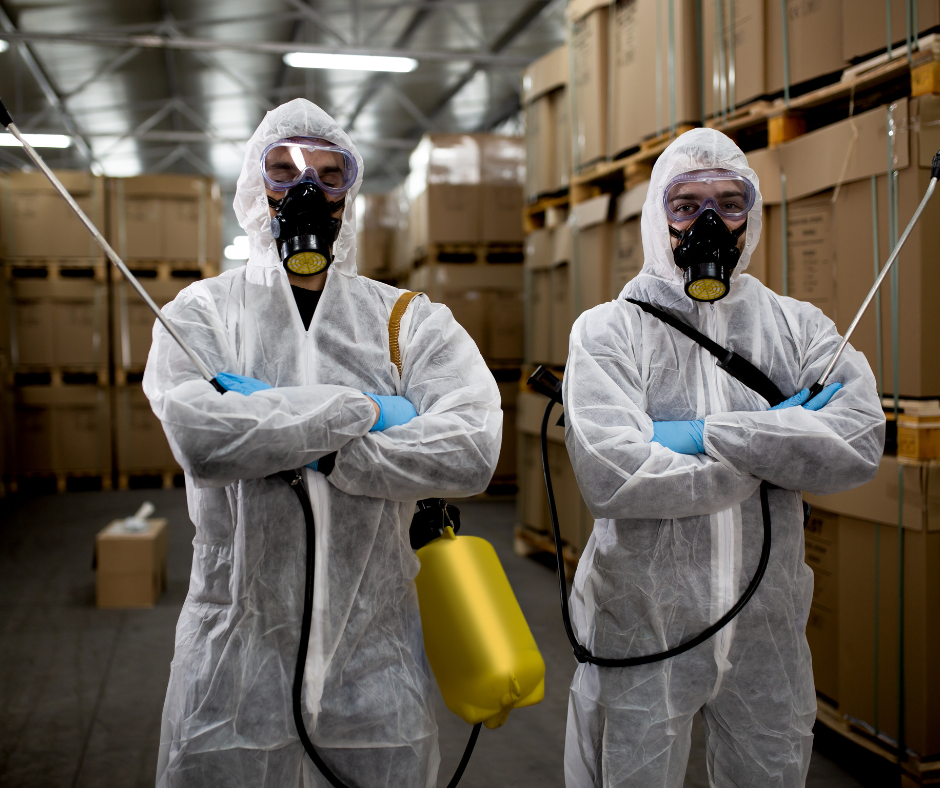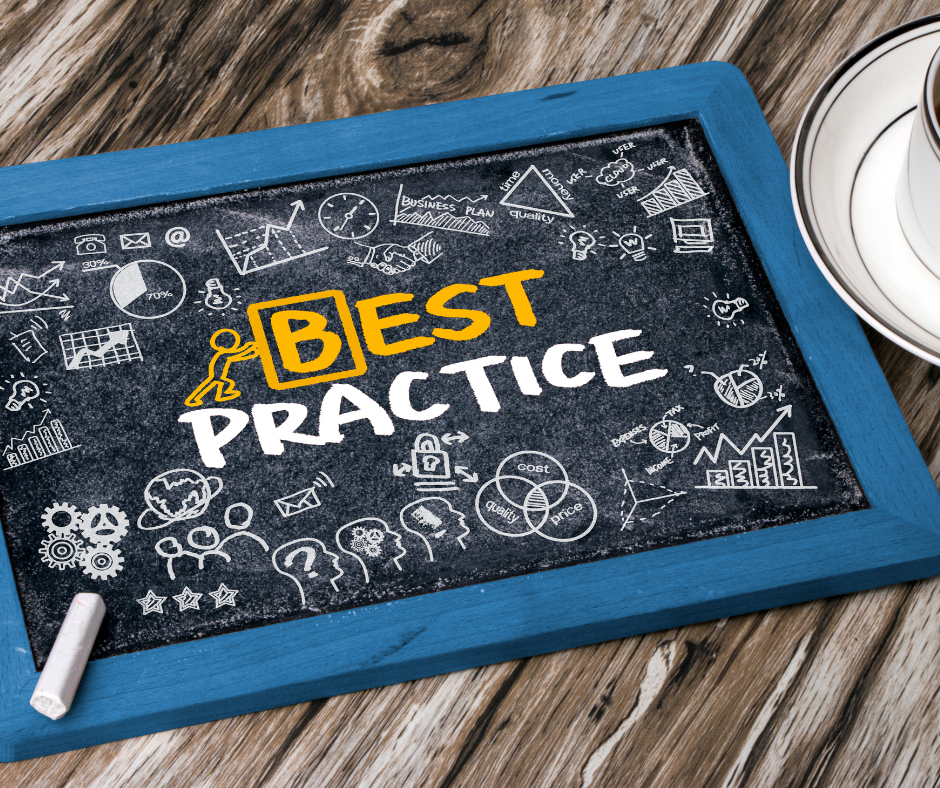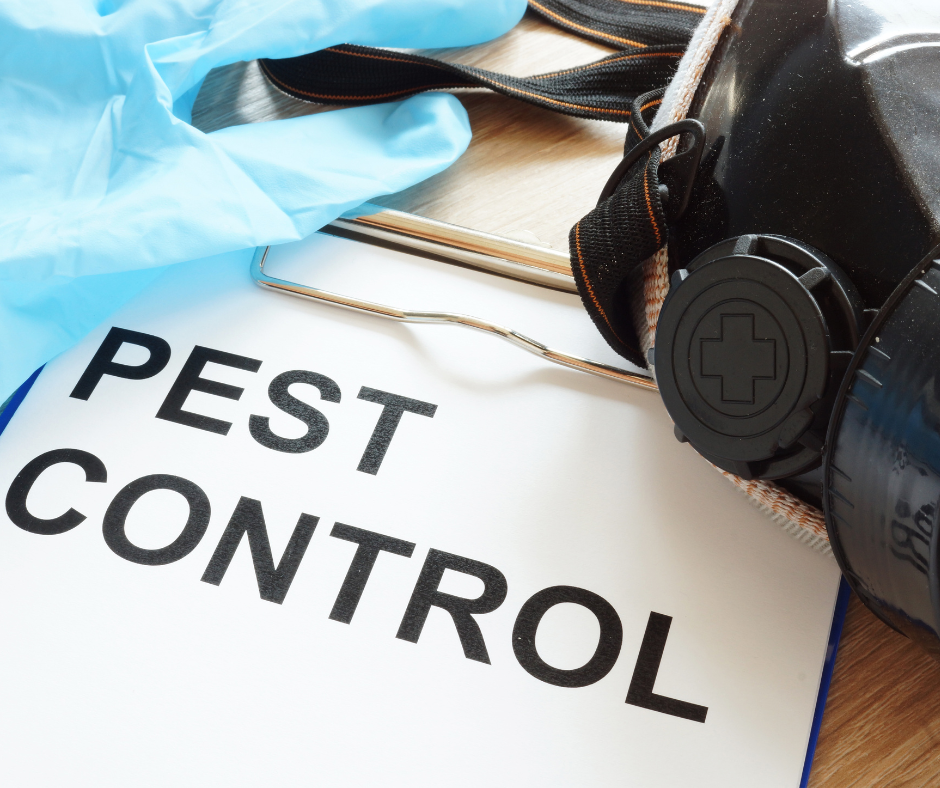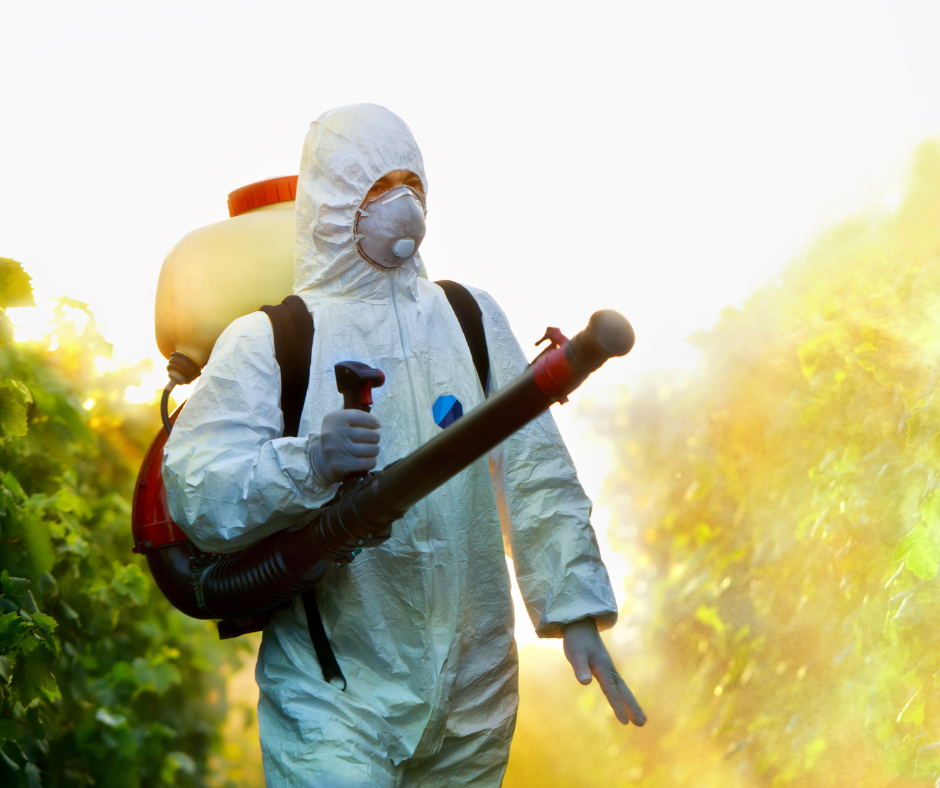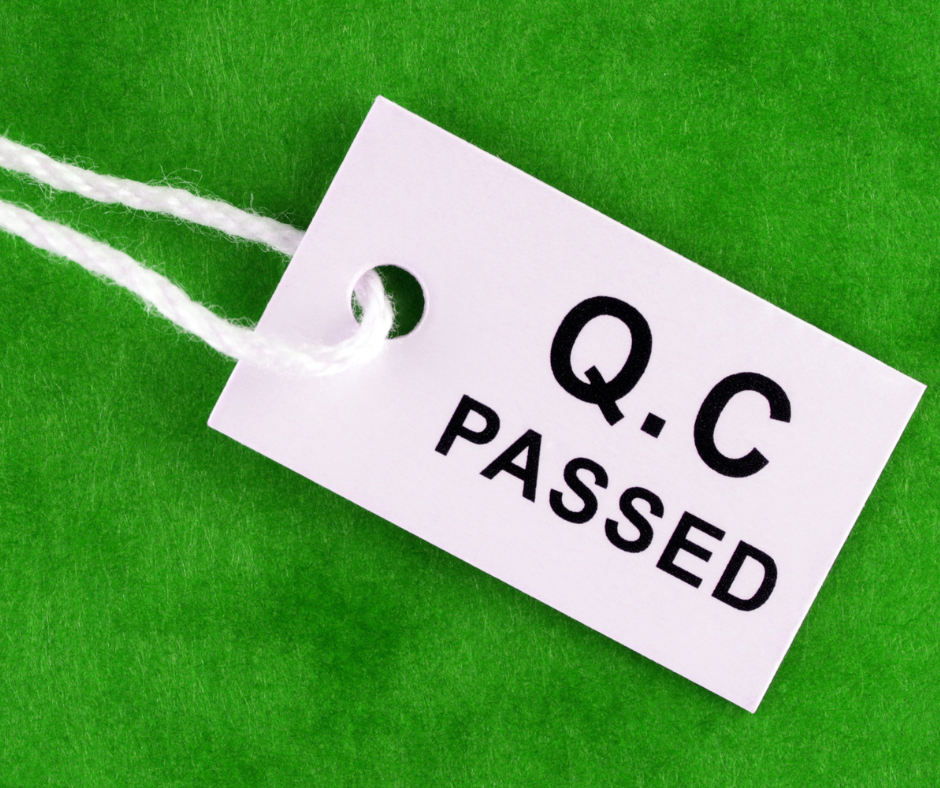Pest control chemicals can be hazardous if not manufactured correctly. Proper quality control measures help ensure the safety of both workers and consumers who may be exposed to the products.Pest control chemicals must be effective in controlling pests. Quality control measures help ensure that the products meet the established specifications and are effective in their intended use. Pest control chemicals are subject to regulatory requirements, and manufacturers must demonstrate compliance with these requirements.
Quality control measures help ensure that the products meet the regulatory requirements and are manufactured in accordance with established standards. Poor quality control can lead to product recalls, customer complaints, and damage to the manufacturer's reputation. By ensuring quality control, manufacturers can maintain a positive reputation and build customer trust. Quality control measures can help identify issues early in the manufacturing process, preventing the production of large quantities of defective products. This can help save costs associated with rework, scrap, and product recalls.
Ensuring quality control in pest control chemical production is critical for maintaining the safety and effectiveness of the product. Here are some steps that can be taken to ensure quality control:
- Use Quality Raw Materials
- Implement Good Manufacturing Practices (GMPs)
- Testing and Quality Control
- Proper Labeling
- Compliance with Regulatory Standards
- Establish and Follow Standard Operating Procedures (SOPs)
- Conduct Regular Quality Assurance (QA) Checks
- Monitor Environmental Conditions
- Use Proper Equipment
- How can Deskera Help You?
- Conclusion
- Related Articles
Use Quality Raw Materials
Using quality raw materials is one of the most critical factors in ensuring quality control in pest control chemical production. The quality of raw materials can directly affect the safety and effectiveness of the final product. Here are some ways to ensure the use of quality raw materials:
- Source from Reliable Suppliers: It is important to source raw materials from reliable suppliers who follow the required quality standards. Suppliers should be vetted to ensure they have the necessary certifications and adhere to best practices.
- Perform Quality Testing: Raw materials should be tested before use to ensure that they meet the required quality standards. Testing should include checking for contaminants, identifying the active ingredient, and measuring potency.
- Use Standardized Materials: Standardized materials provide consistent quality and help ensure that the product meets the required standards. Manufacturers should aim to use raw materials that have standardized potency and purity levels.
- Implement a Quality Control Program: Implementing a quality control program can help ensure that raw materials meet the required quality standards. This can include establishing specifications for raw materials, performing regular audits, and conducting supplier evaluations.
- Monitor Storage Conditions: Raw materials should be stored in appropriate conditions to prevent degradation and contamination. This includes monitoring temperature, humidity, and exposure to light.
Overall, ensuring the use of quality raw materials is essential for maintaining the safety and effectiveness of pest control chemicals. Manufacturers should aim to source from reliable suppliers, perform quality testing, use standardized materials, implement a quality control program, and monitor storage conditions.
Implement Good Manufacturing Practices (GMPs)
Implementing Good Manufacturing Practices (GMPs) is essential for ensuring quality control in pest control chemical production. GMPs are a set of guidelines and practices that help ensure the quality and safety of products during their manufacturing process. Here are some ways to implement GMPs in pest control chemical production:
- Establish Written Procedures: Written procedures should be developed to provide clear instructions for each step of the production process. These procedures should be regularly reviewed and updated as necessary.
- Provide Employee Training: All employees involved in pest control chemical production should receive training on GMPs and the written procedures. This should include training on hygiene, safety, and quality control.
- Maintain a Clean and Organized Facility: A clean and organized facility is essential for maintaining the quality and safety of pest control chemicals. This includes regular cleaning, proper waste disposal, and pest control measures.
- Use Proper Equipment: The use of proper equipment is essential for ensuring accuracy and consistency in pest control chemical production. Equipment should be well-maintained and calibrated, and any deviations from standard operating procedures should be documented.
- Monitor Environmental Conditions: Environmental conditions such as temperature, humidity, and air quality can impact the quality of pest control chemicals. Monitoring these conditions regularly can help prevent quality issues.
- Conduct Regular Audits: Regular audits should be conducted to ensure that GMPs are being followed and to identify any areas for improvement.
- Establish Quality Control Systems: Quality control systems should be established to ensure that the final product meets the required quality standards. This can include in-process testing, final product testing, and quality control checks throughout the production process.
Overall, implementing GMPs is critical for ensuring the quality and safety of pest control chemicals. Manufacturers should establish written procedures, provide employee training, maintain a clean and organized facility, use proper equipment, monitor environmental conditions, conduct regular audits, and establish quality control systems.
Testing and Quality Control
Testing and quality control are crucial components of ensuring quality control in pest control chemical production. Here are some ways to implement testing and quality control in the production process:
- In-Process Testing: In-process testing involves testing the product at various stages of production to ensure that it meets the required standards. This can help detect quality issues early on and prevent them from becoming bigger problems.
- Final Product Testing: Final product testing involves testing the finished product to ensure that it meets the required standards for safety and efficacy. This can include testing for purity, potency, and the presence of contaminants.
- Quality Control Checks: Quality control checks should be performed throughout the production process to ensure that the product meets the required quality standards. This can include checking the weight, size, and appearance of the product.
- Documenting Results: All testing and quality control checks should be documented, and any deviations from standard operating procedures should be investigated and documented.
- Establishing Specifications: Specifications should be established for each product to ensure that it meets the required quality standards. This includes identifying the active ingredient, potency, purity, and any other relevant factors.
- Implementing Corrective Actions: If any quality issues are detected, corrective actions should be implemented immediately to prevent the issue from recurring. This can include revising procedures, conducting additional testing, and performing a root cause analysis.
- Continuous Improvement: Manufacturers should continuously evaluate and improve their processes to enhance product quality and safety. This can be done by monitoring production processes, analyzing customer feedback, and implementing corrective actions when necessary.
Overall, testing and quality control are essential for ensuring the safety and effectiveness of pest control chemicals. Manufacturers should implement in-process testing, final product testing, quality control checks, documenting results, establishing specifications, implementing corrective actions, and continuous improvement to ensure that their products meet the required quality standards.
Proper Labeling
Proper labeling is critical for ensuring quality control in pest control chemical production. The label provides important information about the product, including its intended use, safety precautions, and proper handling instructions. Here are some ways to ensure proper labeling:
- Comply with Regulatory Requirements: Pest control chemicals are subject to regulatory requirements, and manufacturers must comply with these regulations to ensure that their products are safe and effective. Labels must include specific information required by the regulatory agency, such as the product name, active ingredients, and instructions for use.
- Provide Clear and Concise Information: Labels should be clear and easy to read, with information provided in a concise and understandable manner. The font size and type should be legible, and the label should use language that is appropriate for the intended audience.
- Include Safety Warnings: Labels should include safety warnings to alert users to potential hazards associated with the product. This can include warnings about toxicity, flammability, or other hazards.
- Provide Proper Handling Instructions: Proper handling instructions should be included on the label to ensure that users understand how to handle the product safely. This can include instructions for storage, disposal, and protective equipment that should be worn when handling the product.
- Ensure Consistency Across Product Lines: Labels should be consistent across all product lines to ensure that users can easily identify the product and its intended use. This includes using a consistent font and design for all labels.
- Conduct Quality Control Checks: Quality control checks should be conducted to ensure that labels are accurate and comply with regulatory requirements. This can include checking the accuracy of the product name, active ingredients, and instructions for use.
- Monitor Changes in Regulatory Requirements: Manufacturers should monitor changes in regulatory requirements and update their labels accordingly. This can include updating labels to reflect changes in active ingredients or safety warnings.
Overall, proper labeling is essential for ensuring the safety and effectiveness of pest control chemicals. Manufacturers should comply with regulatory requirements, provide clear and concise information, include safety warnings and proper handling instructions, ensure consistency across product lines, conduct quality control checks, and monitor changes in regulatory requirements.
Compliance with Regulatory Standards
Compliance with regulatory standards is essential for ensuring quality control in pest control chemical production. Regulatory agencies establish standards and guidelines for the production and use of pest control chemicals to protect public health and the environment. Here are some ways to ensure compliance with regulatory standards:
- Understand Regulatory Requirements: Manufacturers should understand the regulatory requirements for the production and use of pest control chemicals. This includes regulations related to safety, efficacy, labeling, and environmental impact.
- Develop and Implement Standard Operating Procedures (SOPs): SOPs should be developed and implemented to ensure that all production processes comply with regulatory requirements. SOPs should be reviewed regularly and updated as necessary to reflect changes in regulations or production processes.
- Use Approved Ingredients: Manufacturers should use only approved ingredients in the production of pest control chemicals. Ingredients that are not approved can pose safety risks and may not be effective.
- Conduct Pre-Market Testing: Pre-market testing should be conducted to ensure that pest control chemicals meet regulatory standards for safety and efficacy. This can include testing for toxicity, residue levels, and environmental impact.
- Maintain Accurate Records: Manufacturers should maintain accurate records of all production processes, including the use of ingredients, testing results, and quality control checks. Records should be organized and easily accessible for regulatory inspections.
- Conduct Regular Audits: Regular audits should be conducted to ensure that production processes are in compliance with regulatory standards. Audits can be conducted internally or by an external auditor.
- Respond Promptly to Regulatory Concerns: If a regulatory agency raises concerns about a pest control chemical, manufacturers should respond promptly and take appropriate corrective actions. This can include conducting additional testing, revising production processes, or recalling the product.
Overall, compliance with regulatory standards is critical for ensuring the safety and effectiveness of pest control chemicals. Manufacturers should understand regulatory requirements, develop and implement SOPs, use approved ingredients, conduct pre-market testing, maintain accurate records, conduct regular audits, and respond promptly to regulatory concerns.
Establish and Follow Standard Operating Procedures (SOPs)
Establishing and following standard operating procedures (SOPs) is a critical aspect of quality control in pest control chemical production. SOPs are step-by-step instructions that outline the standard procedures for each task involved in the production process. Here are some ways to ensure that SOPs are established and followed:
- Develop Comprehensive SOPs: SOPs should be developed for all aspects of the production process, including materials handling, equipment operation, testing and analysis, packaging and labeling, and storage and shipping. SOPs should be comprehensive, clear, and easy to follow.
- Ensure SOPs are Consistent with Regulatory Requirements: SOPs should be consistent with regulatory requirements, including safety, efficacy, labeling, and environmental impact. The SOPs should reflect the latest regulatory standards, and be updated as necessary to reflect changes in regulations.
- Provide Training to Employees: Employees should receive training on all SOPs that apply to their job functions. Training should include both theoretical and practical components, and employees should be tested on their understanding of the SOPs.
- Monitor Adherence to SOPs: Regular monitoring and verification of adherence to SOPs should be conducted to ensure that the procedures are being followed correctly. Any deviations from the SOPs should be documented and investigated.
- Revise SOPs as Needed: SOPs should be revised as necessary based on feedback from employees, regulatory changes, and the results of internal audits. All revisions should be documented and communicated to all relevant personnel.
- Ensure Documentation is Accurate and Complete: Documentation should be kept for all production activities, including deviations from SOPs. This documentation should be accurate, complete, and easily accessible for internal and external audits.
- Foster a Culture of Compliance: A culture of compliance should be fostered in the organization, emphasizing the importance of following SOPs to ensure product quality, safety, and efficacy. Employees should be encouraged to report any deviations from SOPs, and corrective actions should be taken promptly.
Overall, establishing and following SOPs is essential for ensuring consistency and quality in pest control chemical production. Manufacturers should develop comprehensive SOPs, ensure they are consistent with regulatory requirements, provide training to employees, monitor adherence to SOPs, revise SOPs as needed, ensure documentation is accurate and complete, and foster a culture of compliance.
Conduct Regular Quality Assurance (QA) Checks
Conducting regular quality assurance (QA) checks is an important part of quality control in pest control chemical production. QA checks are designed to ensure that the products meet or exceed quality standards and specifications. Here are some ways to ensure regular QA checks are conducted:
- Develop a QA Program: A comprehensive QA program should be developed that outlines the QA procedures, including sampling, testing, and analysis of raw materials, in-process materials, and finished products. The QA program should also specify the frequency of QA checks and the acceptance criteria.
- Sample and Test Raw Materials: Raw materials should be sampled and tested to ensure they meet the established specifications. This can include testing for purity, potency, and impurities.
- Conduct In-Process QA Checks: In-process QA checks should be conducted during each stage of the production process. This can include monitoring temperature, pH, and other critical parameters, as well as conducting visual inspections.
- Test Finished Products: Finished products should be sampled and tested to ensure they meet the established specifications. This can include testing for active ingredients, potency, and purity, as well as testing for physical characteristics such as color, odor, and viscosity.
- Document QA Results: All QA results should be documented, including deviations from the established specifications. Deviations should be investigated, and corrective actions should be taken promptly to address any issues.
- Conduct Internal Audits: Internal audits should be conducted regularly to ensure that the QA program is being followed correctly. Any issues identified during the audits should be addressed promptly.
- Use External Testing Services: External testing services can be used to provide an independent assessment of product quality. This can include testing for potency, purity, and efficacy.
Overall, conducting regular QA checks is essential for ensuring product quality and safety in pest control chemical production. Manufacturers should develop a comprehensive QA program, sample and test raw materials and finished products, conduct in-process QA checks, document QA results, conduct internal audits, and use external testing services as needed.
Monitor Environmental Conditions
Monitoring environmental conditions is an important aspect of quality control in pest control chemical production. Environmental conditions, such as temperature and humidity, can have a significant impact on the stability and effectiveness of the products. Here are some ways to monitor environmental conditions:
- Establish Environmental Monitoring Program: A comprehensive environmental monitoring program should be established to monitor environmental conditions, such as temperature, humidity, and light exposure. The program should specify the locations of the monitoring devices, the frequency of monitoring, and the acceptance criteria.
- Install Monitoring Devices: Monitoring devices, such as data loggers and sensors, should be installed in critical areas where the products are stored or produced. These devices can record data on temperature, humidity, and other environmental factors.
- Analyze Monitoring Data: The data collected by the monitoring devices should be analyzed regularly to identify any deviations from the established acceptance criteria. Any deviations should be investigated promptly to determine the root cause and appropriate corrective action.
- Ensure Equipment is Calibrated: The monitoring devices should be calibrated regularly to ensure they are accurate and reliable. Calibration should be performed by qualified personnel, and the results should be documented.
- Train Personnel: Personnel responsible for monitoring environmental conditions should receive training on the monitoring program and the proper use of monitoring devices. They should also be trained on how to interpret monitoring data and how to respond to deviations from the established acceptance criteria.
- Use Environmental Controls: Environmental controls, such as air conditioning, dehumidifiers, and UV filters, can be used to maintain the desired environmental conditions. These controls should be regularly maintained and calibrated to ensure they are functioning correctly.
- Document Environmental Monitoring Results: All environmental monitoring results should be documented and retained for review. This documentation can be used to demonstrate compliance with regulatory requirements and to identify trends in environmental conditions over time.
Overall, monitoring environmental conditions is essential for ensuring product quality and stability in pest control chemical production. Manufacturers should establish a comprehensive environmental monitoring program, install monitoring devices, analyze monitoring data, ensure equipment is calibrated, train personnel, use environmental controls, and document environmental monitoring results.
Use Proper Equipment
Using proper equipment is crucial for ensuring quality control in pest control chemical production. Proper equipment ensures that the products are manufactured in a safe and efficient manner and that they meet the established specifications. Here are some ways to use proper equipment:
- Use Equipment Designed for Pest Control Chemical Production: Equipment used in pest control chemical production should be designed specifically for this purpose. This equipment should be made of materials that are compatible with the products being produced, and it should be easy to clean and maintain.
- Maintain Equipment: Equipment should be regularly maintained and serviced to ensure it is operating correctly. This can include cleaning, lubricating, and replacing parts as needed. Any repairs or maintenance should be documented.
- Calibrate Equipment: Equipment that measures or controls critical parameters, such as temperature, pressure, and flow rate, should be calibrated regularly to ensure it is accurate and reliable. Calibration should be performed by qualified personnel, and the results should be documented.
- Train Personnel: Personnel responsible for operating and maintaining equipment should receive proper training on how to use the equipment correctly and safely. This can include training on how to calibrate equipment, how to troubleshoot issues, and how to perform routine maintenance.
- Use Protective Equipment: Personnel handling pest control chemicals should use proper protective equipment, such as gloves, goggles, and respirators, to protect themselves from exposure. This equipment should be selected based on the type of chemical being used and the level of exposure.
- Document Equipment Use: All equipment use should be documented, including any deviations or issues that occur. This documentation can be used to identify trends over time and to demonstrate compliance with regulatory requirements.
Overall, using proper equipment is critical for ensuring quality control in pest control chemical production. Manufacturers should use equipment designed for this purpose, maintain equipment, calibrate equipment, train personnel, use protective equipment, and document equipment use. These measures help ensure the products are manufactured safely, efficiently, and in compliance with regulatory requirements.
How can Deskera Help You?
Deskera's integrated financial planning tools allow investors to better plan their investments and track their progress. It can help investors make decisions faster and more accurately.
Deskera Books can assist you in automating your accounting and mitigating business risks. Deskera makes it easier to create invoices by automating many other procedures, reducing your team's administrative workload.
Deskera also offers a suite of integrated applications to help businesses manage their financials, inventory, and operations. Furthermore, other business aspects such as HR (Deskera People), CRM (Deskera CRM), and ERP are provided by Deskera. These could be crucial and can help short sellers keep track of their businesses and make better decisions.
Conclusion
The main points to consider when ensuring quality control in pest control chemical production:
- Use quality raw materials
- Implement good manufacturing practices (GMPs)
- Conduct regular testing and quality control
- Proper labeling of products
- Compliance with regulatory standards
- Continuous improvement through feedback and monitoring
- Establish and follow standard operating procedures (SOPs)
- Conduct regular quality assurance (QA) checks
- Monitor environmental conditions
- Use proper equipment
- Conduct in-process testing
By ensuring quality control, manufacturers can maintain the safety, efficacy, and compliance of their products, as well as protect their reputation and save costs associated with defective products.
Related Articles
